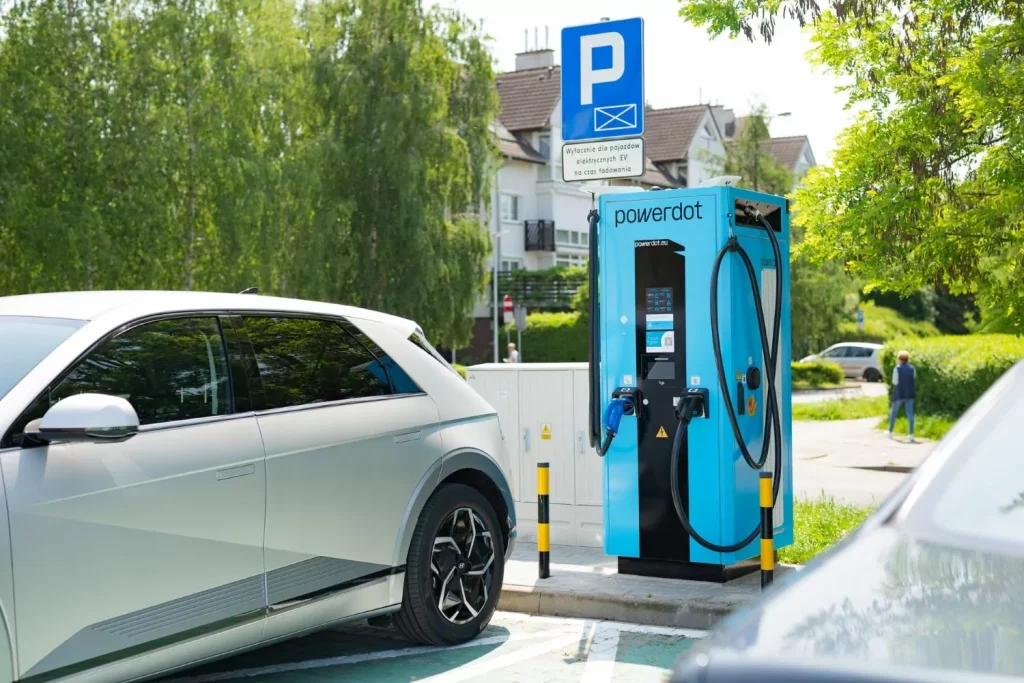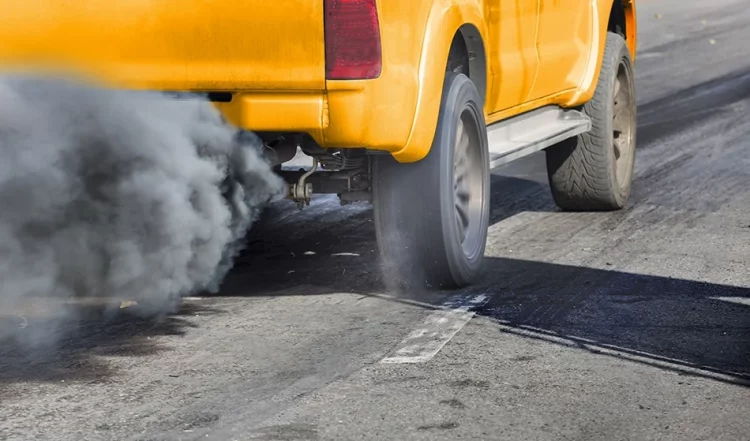Introduction:
As environmental concerns continue to grow globally, governments and regulatory bodies have implemented stricter environmental regulations to address the climate crisis and promote sustainability. The automotive industry, being one of the largest contributors to greenhouse gas emissions, has found itself at the center of this environmental transformation. With carbon dioxide (CO2) emissions from internal combustion engine (ICE) vehicles, air pollution from diesel engines, and concerns over fossil fuel dependency, automakers face a multifaceted challenge as they navigate an evolving regulatory landscape.
These tightening regulations—aimed at reducing carbon emissions, improving fuel efficiency, and transitioning to cleaner energy sources—are pushing the automotive sector to rethink its strategies. From electric vehicles (EVs) and hybrid technologies to alternative fuels and sustainability practices in manufacturing, the industry is under increasing pressure to innovate and comply. The transition, however, is not simple; it demands substantial investment, technological innovation, and a complete overhaul of traditional business models.
This article will explore how the automotive industry is responding to the growing environmental regulatory pressure and what challenges and opportunities lie ahead as governments, consumers, and manufacturers strive for a more sustainable future.
1. The Impact of Stricter Environmental Regulations on the Automotive Industry
A. Global Emissions Standards and Their Effect
Environmental regulations on emissions have become more stringent worldwide, especially in key markets like the European Union, United States, and China. Carbon dioxide (CO2) emissions from vehicles have been a focal point, as transport is one of the largest sources of global greenhouse gas emissions.
- EU Emission Standards: The European Union has been particularly proactive in setting emissions standards. The Euro 6 standards, for instance, limit the amount of nitrogen oxides (NOx) and particulate matter (PM) that a vehicle can emit. In 2020, the EU Green Deal introduced ambitious goals, such as achieving net-zero emissions by 2050 and transitioning to 100% electric vehicles by 2035. For automakers, this means a move toward carbon-neutral vehicles and substantial investments in electrification.
- U.S. and California’s Aggressive Policies: In the United States, states like California have taken the lead in implementing stricter environmental policies. The state has set goals to ban the sale of new gasoline-powered vehicles by 2035, with other states likely to follow suit. The federal government has also pushed for stricter fuel efficiency standards, including the Corporate Average Fuel Economy (CAFE) standards that require automakers to improve the average fuel efficiency of their fleets.
- China’s Role in Clean Transportation: As the world’s largest car market, China has set aggressive targets for electric vehicles (EVs). The Chinese government has implemented subsidies and incentives for EV production, alongside strict emission standards. In 2020, China also announced its “New Energy Vehicle” (NEV) policy, which mandates that a growing percentage of vehicles sold must be NEVs (including battery electric, plug-in hybrid, and hydrogen fuel-cell vehicles).
B. Stricter Fuel Economy Requirements
To address rising emissions and combat the environmental impact of traditional vehicles, many countries have set increasingly stringent fuel economy standards. These standards demand that automakers reduce the fuel consumption of their vehicles, particularly in markets with large fleets of cars.
- Shift Toward Fuel-Efficient Vehicles: The primary way automakers have responded to these fuel economy standards is by introducing more fuel-efficient vehicles. This has involved a mix of innovations, from improving internal combustion engines (ICE) and hybrid technology to launching new lightweight materials and aerodynamic designs to reduce fuel consumption.
- Electric and Hybrid Vehicles as the Solution: As fuel efficiency standards tighten, many automakers are increasingly focusing on electric vehicles and hybrid vehicles as the primary solutions to meet emissions regulations. For example, automakers like Toyota, Ford, Volkswagen, and GM are significantly ramping up their EV and hybrid vehicle offerings, recognizing that these vehicles are the key to reducing emissions.
2. Technological Innovation in Response to Environmental Regulations
A. The Electrification of the Automotive Industry
The transition to electric vehicles (EVs) is seen as the most effective way for automakers to comply with stringent environmental regulations, reduce emissions, and align with government mandates.
- Battery Electric Vehicles (BEVs): With the push for cleaner transportation, automakers are significantly increasing their investments in battery electric vehicles (BEVs). Automakers like Tesla, Volkswagen, Ford, and BMW are committing billions of dollars to develop fully electric vehicle fleets. In fact, Volkswagen announced that by 2030, it plans to transition to producing only electric vehicles in certain key markets.
- Plug-in Hybrid Electric Vehicles (PHEVs): While battery electric vehicles (BEVs) are the end goal for many automakers, plug-in hybrid vehicles (PHEVs) are a transitional technology. These vehicles combine an internal combustion engine with an electric motor, allowing for emission reductions and fuel savings without completely eliminating the gasoline engine. PHEVs offer a bridge solution for customers hesitant to fully transition to electric vehicles.
- Battery Development and Charging Infrastructure: One of the biggest barriers to the widespread adoption of EVs is the cost and range of batteries. Automakers are investing heavily in research and development to improve battery technology, aiming to reduce costs and increase energy density. Companies like Tesla, LG Chem, and CATL are at the forefront of developing solid-state batteries, which promise higher efficiency, faster charging, and lower cost.
- Alternative Fuels: In addition to electric power, automakers are also exploring other alternative fuels, such as hydrogen and biofuels. While hydrogen fuel-cell vehicles are still in the early stages of adoption, they offer the potential for zero-emission driving, particularly in the commercial vehicle and heavy-duty sectors.
B. Sustainability and Green Manufacturing Practices
In response to increasing environmental regulations, automakers are also rethinking their manufacturing processes to ensure that they align with sustainability goals. Beyond just producing clean vehicles, the industry must also reduce the environmental impact of its operations.
- Sustainable Materials: Automakers are increasingly looking for ways to incorporate sustainable materials into vehicle production. This includes recycled materials, bioplastics, and lightweight alternatives such as carbon fiber to reduce energy consumption and the carbon footprint of manufacturing processes.
- Carbon Neutrality: Many automakers, including BMW, Mercedes-Benz, and Volvo, have committed to becoming carbon-neutral by 2030 or sooner. This involves not only reducing the emissions from the vehicles themselves but also addressing emissions across the entire supply chain and manufacturing processes.
- Circular Economy Models: Automakers are exploring circular economy models, which emphasize reducing waste, reusing materials, and recycling components. This includes programs for battery recycling, where old EV batteries can be reused for new vehicles or repurposed for energy storage solutions.

3. Consumer Perceptions and Market Shifts
A. Changing Consumer Preferences
As environmental awareness grows, consumers are increasingly prioritizing sustainability in their purchasing decisions. This is especially true in younger generations, who are more likely to choose electric vehicles over traditional gasoline-powered cars.
- Increased Demand for Electric Vehicles: Governments’ regulations are pushing consumers toward cleaner vehicles. The growing availability of affordable and high-performance electric vehicles has been a key factor in driving consumer demand. Automakers are responding by offering a wider range of EV options, from compact cars to luxury vehicles and SUVs, catering to a broader audience.
- Environmental Branding: Automakers are also aligning their brand identities with environmental consciousness. Brands like Tesla, BMW, and Volvo have successfully marketed their electric vehicles as part of a larger sustainability and eco-conscious lifestyle, which resonates with environmentally-minded consumers.
- Government Incentives: In addition to regulatory mandates, many governments offer subsidies and tax incentives for consumers purchasing electric vehicles. These incentives, along with the growing range of affordable electric vehicles, help drive consumer adoption.
4. Challenges Facing the Automotive Industry
While the automotive industry is making significant strides in response to environmental regulations, there are several challenges to overcome:
A. The Cost of Transition
- High R&D Costs: Developing electric vehicles, improving battery technology, and transforming manufacturing processes come with significant financial costs. Smaller automakers, in particular, may struggle to compete with larger companies in investing in this transition.
- Infrastructure Development: Although the adoption of EVs is growing, the charging infrastructure remains a key hurdle. While governments are investing in charging stations, the rate of infrastructure expansion may not keep pace with the demand for electric vehicles, particularly in rural areas.
B. Consumer Transition
- Range Anxiety: Despite advancements in battery technology, consumers are still concerned about the driving range of electric vehicles and the availability of charging stations. This can be a major deterrent for many potential buyers.
- High Upfront Costs: Although the total cost of ownership for EVs is lower due to fewer maintenance needs and lower fuel costs, the upfront cost of electric vehicles is still higher compared to traditional gasoline cars. This can make it difficult for price-sensitive consumers to make the switch.
Conclusion: Navigating a Greener Future
As environmental regulations become more stringent, the automotive industry faces significant challenges in adapting to a rapidly changing landscape. From embracing electric vehicles and hybrids to overhauling manufacturing processes and developing sustainable technologies, automakers must find innovative ways to comply with regulatory mandates while meeting consumer expectations.
While there are obstacles, there are also opportunities for automakers to lead in sustainability, technological innovation, and eco-conscious design. By leveraging clean technologies, exploring alternative fuels, and aligning their strategies with evolving environmental expectations, the automotive industry can contribute to a more sustainable, carbon-neutral future.
The automotive sector’s response to the environmental challenge will shape not only the future of transportation but also the future of the planet itself. Collaboration, innovation, and adaptation will be key to navigating the road ahead.











































